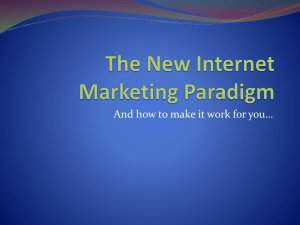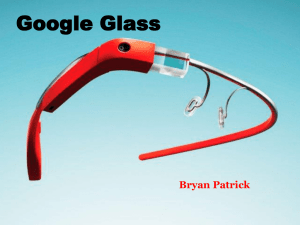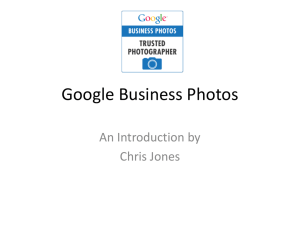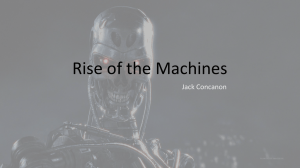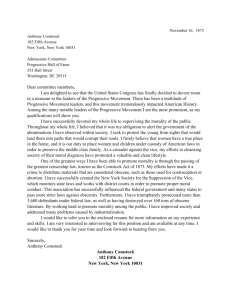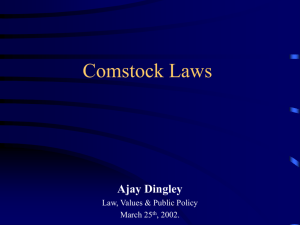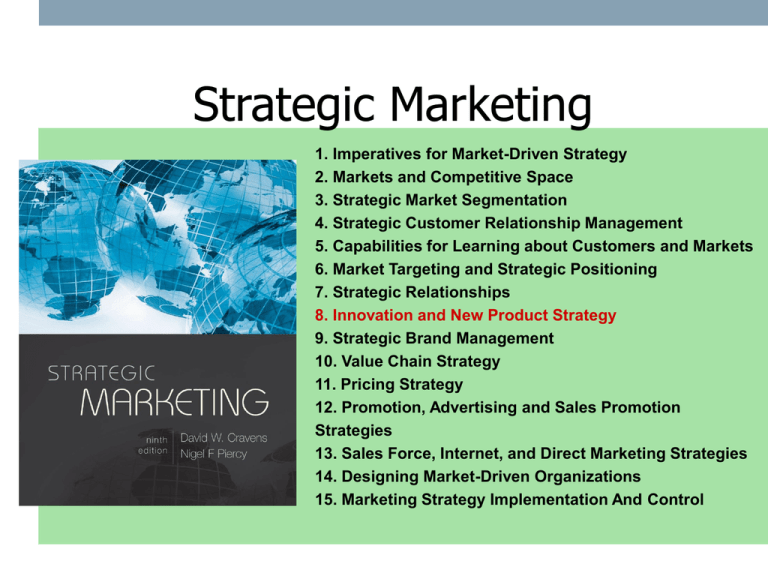
Strategic Marketing
1. Imperatives for Market-Driven Strategy
2. Markets and Competitive Space
3. Strategic Market Segmentation
4. Strategic Customer Relationship Management
5. Capabilities for Learning about Customers and Markets
6. Market Targeting and Strategic Positioning
7. Strategic Relationships
8. Innovation and New Product Strategy
9. Strategic Brand Management
10. Value Chain Strategy
11. Pricing Strategy
12. Promotion, Advertising and Sales Promotion
Strategies
13. Sales Force, Internet, and Direct Marketing Strategies
14. Designing Market-Driven Organizations
15. Marketing Strategy Implementation And Control
CHAPTER 8
Innovation and New Product
Strategy
The Innovation Mandate
McGraw-Hill/Irwin
Copyright © 2009 by The McGraw-Hill Companies, Inc. All rights reserved.
INNOVATION AND NEW PRODUCT STRATEGY
*
*
*
*
*
*
*
*
Innovation as a Customer Driven Process
New Product Planning
Idea Generation
Screening, Evaluating, and Business Analysis
Product and Process Development
Marketing Strategy and Market Testing
Commercialization
Variation in the Generic New Product
Planning Process
8-3
INNOVATION FEATURE
Managing Google’s Idea Factory
As director of consumer Web products Marissa Mayer is a champion of
innovation. She favors new product launches that are early and often.
She joined Google in early 1999 as a programmer when the workforce
totaled 20. By 2007 Google had 5,700 employees with expected sales of
$16 billion.
How Google Innovates
The search leader has earned a reputation as one of the most innovative
companies in the world of technology. A few of the ways Google hatches
new ideas:
FREE (THINKING) TIME
Google gives all engineers one day a week to develop their own pet
projects, no matter how far from the company’s central mission. If
work gets in the way of free days for a few weeks, they accumulate.
Google News came out of this process.
8-4
THE IDEAS LIST
Anyone at Google can post thoughts for new technologies of businesses on
an ideas mailing list, available companywide for input and vetting. But
beware: Newbies who suggest familiar or poorly thought-out ideas can face
an intellectual pummeling.
OPEN OFFICE HOURS
Think back to your professors’ office hours in college. That’s pretty much
what key managers, including Mayer, do two or three times a week, to discuss
new ideas. One success born of this approach was Google’s personalized
home page.
BIG BRAINSTORMS
As it has grown, Google has cut back on brainstorming sessions. Mayer still
has them eight times a year, but limits hers to 100 engineers. Six concepts
are pitched and discussed for 10 minutes each. The goal: to build on the
initial idea with at least one complementary idea per minute.
ACQUIRE GOOD IDEAS
Although Google strongly prefers to develop technology in-house, it has also
been willing to snap up small companies with interesting initiatives. In 2004
it bought Keyhole, including the technology that let Google offer sophisticated
maps with satellite imagery.
Source: “Managing Google’s Idea Factory,” BusinessWeek, October 3, 2005, 88-90.
8-5
FINDING CUSTOMER VALUE OPPORTUNITIES
Customer value analysis
Objective is to identify needs for:
1. New products
2. Improvements to existing
products
3. Improvements in production
processes
4. Improvements in supporting
services
8-6
Customer
Expectations
Customer
Satisfaction Gap
Actual
Product
Performance
OPPORTUNITIES
(1) New Products
(2) Improvements
(3) New and Improved
Processes
8-7
TRANSFORMATIONAL
Break-through innovation
Digital photography
NEW PRODUCT CATEGORY
Dell
Printers
Nike
Apparel
Golf clubs
LINE EXTENSION
New color/package/style
INCREMENTAL IMPROVEMENTS
Software updates
8-8
The Evolution of the Creative Company
STEP 1
Technology and information become commoditized and globalized.
Suddenly, the advantage of making things “faster, cheaper, better” diminishes, and
profit margins decline.
STEP 2
With commoditization, core advantages can be shipped abroad.
Outsourcing to India, China, and Eastern Europe sends a growing share of
manufacturing and even the Knowledge Economy overseas.
STEP 3
Design Strategy begins to replace Six Sigma as a key organizing
principle. Design plays a key role in product differentiation, decision-making,
and understanding the consumer experience.
Source: Bruce Nussbaum, “How to Build Innovation Companies,” BusinessWeek, August 1, 2005, 62-63.
8-9
STEP 4
Creative innovation becomes the key driver of growth.
Companies master new design thinking and metrics and create
products that address consumers’ unmet, and often unarticulated,
desires.
STEP 5
The successful Creative Corporation emerges, with new
Innovation DNA. Winners build a fast-moving culture that
routinely beats competitors because of a high success rate for
innovation.
8-10
Characteristics of Successful Innovators
Creating an
Innovative Culture
Leveraging
Capabilities
Making Resource
Commitments
STRATEGIC
INITIATIVES
Selecting the
Right
Innovation
Strategy
Developing and
Implementing Effective
New Product Processes
8-11
Creating an Innovation Culture
Innovation Workshop for top executives to
develop an innovation plan.
Innovation Statement highlighting objectives
and senior management’s role and responsibilities.
Training programs for employees and
managers.
Communicate the priority of innovation.
Speakers to expose employees to innovation
authorities.
Source: Thomas D. Kuczmarski et al., “The Breakthrough Mindset,” Marketing Management, March/April 2003, 43.
8-12
The Innovation Strategy Spells Out Management’s Priorities for
New Product Opportunities
1. Set specific New Product Objectives.
2. Communicate the role of New Products
throughout the organization.
3. Define the areas of strategic focus:
Product Scope
Markets
Technologies
4. Include longer term discontinuous projects
in the portfolio along with incremental
projects.
Source: Robert Cooper, “Benchmarking New Product Performance,” European Management Journal, Feb. 1998, 1-7.
8-13
NEW PRODUCT PLANNING PROCESS
Customer
Needs
Analysis
Idea
Generation
Screening
and
Evaluation
Business
Analysis
Marketing
Strategy
Development
Product
Development
Testing
Commercialization
8-14
Achieving Cross-Functional Interaction and Coordination
R&D
Operations
Marketing
Finance
8-15
Responsibility for New Product Planning
*
*
*
*
*
*
Coordination of new product activities by a high-level
general manager
Inter-functional coordination by a team of new
product planning representatives
Creation of a project task force responsible for new
product planning
Designation of a new products manager to
coordinate planning between departments
Formation of matrix structure for integration new
product planning with business functions
Creation of a permanent design center
8-16
IDEA GENERATION
*
*
*
*
*
*
Idea search: targeted or open-ended?
How extensive and aggressive?
What specific sources are best for generating a
regular flow of new product ideas?
How can new ideas be obtained from
customers?
Where will responsibility for the new product
ideas search be placed?
What are potential threats from alternative (or
disruptive) technologies?
8-17
Alliances/
Acquisition/
Licensing
National
Policy
Creative
Methods
Direct
Search
Technological
Innovation
METHODS
OF
GENERATING
IDEAS
Linking
Marketing
and Technology
Exploratory
Customer
Studies
Facilitating
Lead User
Analysis
8-18
An Innovation Champion in Action at GE
Beth Comstock calls herself “a little bit of the crazy, wacky one” at corporate
headquarters. And it’s an apt description when you realize she works at General Electric
Co. Comstock, 44, is charged with transforming GE’s culture, famously devoted to
process, engineering, and financial controls, to one that’s more agile and creative.
Chairman and CEO Jeffrey R. Immelt tapped the former communications chief to become
GE’s first-ever chief marketing officer almost three years ago. The job came with a
critical twist: the goal of driving innovation through the company’s 300,000 plus ranks.
“Creativity is still a word we’re wrestling with,” Comstock concedes. “It seems a bit
undisciplined, a bit chaotic for a place like GE.” More comfortable territory is the term
“imaginative problem-solving” – encouraging people to think “what if” – yet always with
the aim of driving growth. One of Comstock’s first moves was to bring in anthropologists
to audit GE’s culture. They came back with praise for GE’s famous work ethic but noted
that employees wanted more “wow” – more discoveries from the company founded by
Thomas Edison.
8-19
Comstock has a role whose importance is spreading throughout Big Business – that of
innovation champion. She began by studying the best practices at companies such as
Procter & Gamble, FedEx, and 3M. She brought in a raft of creativity consultants,
futurists, and design gurus to lead sessions with different operations. Their names were
jolting for GE types: Play, a Richmond (VA.) group that helps execs think differently, and
Jump, based in San Mateo, CA., which researches how people use things. GE is
expanding its army of designers to bring businesses closer to customers. And Comstock
is staging “dreaming sessions” where Immelt, senior execs, and customers debate future
market trends. Comstock concedes some managers view the workshops as a waste of
time. “We have a long way to go,” she says. But for GE, there’s no turning back.
Source: Bruce Hussbaum, “How to Build Creative Companies,” BusinessWeek, August, 2005, 77.
8-20
SCREENING, EVALUATING, AND BUSINESS ANALYSIS
IDEA GENERATION
SCREENING
(fit/feasibility)
CONCEPT EVALUATION
BUSINESS ANALYSIS
8-21
Business Analysis
*
Revenue Forecasts
*
Preliminary Marketing Plan
*
Cost Estimation
*
Profit Projections
*
Other Considerations
8-22
PRODUCT AND PROCESS DEVELOPMENT
NEW
PRODUCT
CONCEPT
PRODUCT
DEVELOPMENT
AND USE
TESTING
MARKETING
STRATEGY
DEVELOPMENT
MARKET
TESTING
LAUNCH
8-23
Product and Process Development
* Development of the new product includes:
* Product design
* Packaging design
* Decisions to make or purchase product components
* Product Development Process:
* Product Specifications
* Industrial Design
* Prototype
* Use Tests
* Process Development
* Collaborative Development
8-24
Does it have the
required attributes?
Verify
claims
PURPOSE OF
USE TESTS
Ideas for
improvements
Identify use
situations
8-25
MARKETING STRATEGY AND MARKET TESTING
Marketing Strategy Decisions
* Market Targeting
* Positioning Strategy
Market Testing Options
* Simulated Test Marketing
* Scanner – Based Test Marketing
* Conventional Test Marketing
* Testing Industrial Products
* Selecting Test Sites
* Length of the Test
* External Influences
8-26
Scanner-based Test Marketing
Less artificial than simulated testing
Costs less than full-scale market test
Test is controlled by using IRI’s 2300 panel
members in each test city
Cable TV enables use of controlled ad testing
Tests take about 12 months
8-27
COMMERCIALIZATION
The Marketing Plan
* Complete marketing strategy
* Responsibilities for execution
* Cross – functional approach
Monitoring and Control
* Real – time tracking
* Role of the Internet
* Include product performance metrics with performance
targets
8-28
Marketing Strategy
Market Target(s)
Objectives
Marketing
Program(s)
8-29
VARIATIONS IN THE GENERIC NEW PRODUCT PLANNING
*
Technology Push Processes
*
Platform Products
*
Process – Intensive Products
*
Customized Products
8-30





